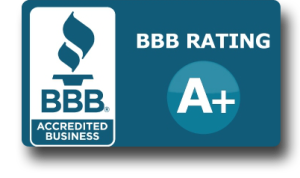Strategic Tax Planning for the Wealthy with Reverse Mortgages
Loan officers in the Reverse Mortgage business have ben trying to explain this to financial planners for some time now. I was glad to find this from Nasdaq this morning.
The Tax Cuts and Job Act of 2017 (TCJA) dramatically changed tax law in our country. It has a profound effect on mortgage interest deductibility and actually elevated the reverse mortgage as an enhanced tool for strategic IRA withdrawals, Roth conversions, Net Unrealized Appreciation (NUA), and other strategies centered around deferred or accelerated tax accounts.
So what were the important changes in December 2017 from the TCJA? The first is that the standard deduction dramatically increased for couples to $24,000 and over $26,000 for those over 65. So whether you itemize or not— own a home or not, have a mortgage or not—- everyone has the same standard deduction. It is estimated by the Tax Policy Center that over 95% of taxpayers will no longer have enough deductions to itemize and that they will just get the standard deduction and not use Schedule A at all.
The TCJA made another major change. Now the only deduction on mortgage interest allowed is acquisition indebtedness. Formerly, home equity indebtedness interest was allowed to be deducted on a loan balance of $100,000 that was perhaps a HELOC or 2nd mortgage. So unless you are using the mortgage funds to build, buy, or substantially improve your home, interest is not deductible. It is important to note that it doesn’t matter what kind of loan it is—- first mortgage, second mortgage, reverse mortgage, line of credit, or refinance of an existing mortgage— as long as the money is being used or was used at one time to build or buy a new home or improve an existing home.
Now it is necessary to understand the nature of a Home Equity Conversion Mortgage Line of Credit (HECM LOC). Lets say on a 600,000 home, 300,000 is determined as the initial loan balance for clients in their 60s, who have just refinanced acquisition debt or purchased a new home with 300,000 down and 300,000 in a fully drawn line of credit (no additional line of credit available at closing— but the reverse HECM LOC is in place).
When the full balance is drawn at closing, the line of credit will continue to grow to make room for the interest that is accruing on the money that is being used. So as an example rate of 3.5%, next year the loan balance— and the line— will be at $310,000 and then at $321,000, then $332,000, etc etc. When any payment is made—even if it is only interest—the payment is first applied to the MIP and Interest expense BEFORE any principal is paid.
After the payment is made, within a few days, the full amount of the payment—regardless of how it was applied to the loan balance— is made available for the borrower to re-borrow from the line of credit the full amount that was paid. This can be done for as long as the client is living in the home, as long as they pay taxes and insurance. The line is non-recourse and guaranteed regardless of what happens to the home value.
How does this apply for income tax purposes and IRA strategic withdrawals? Using the numbers above a client purchases a home for $600,000 as their long term retirement home and takes out a purchase reverse mortgage for $300,000. They let the interest accrue for several years and as the balance is negatively amortizing at some point in the future, the balance goes to $360,000.
At that time— or any time that it makes sense — during the loan term— that client takes a voluntary distribution from the IRA for $60,000 and triggers a 1099 as ordinary income. That is step one. Step two is to make a $60,000 voluntary interest payment to their HECM LOC, reducing their balance owed to $300,000. That triggers a 1098 — as accrued interest (and maybe MIP depending on congress each year) is potentially deductible in the year it is paid.
That would be deductible under current tax rules as mortgage interest (or MIP) on Schedule A and it is well over the $24,000 standard deduction. One may do elective medical, charitable contributions, and of course stack any real estate taxes as well that particular year. It may be possible to withdraw $70,000 or $80,000 instead of just $60,000 depending on other deductions and the client’s income that year.
But you may say that the client has lost that liquidity because of paying that huge interest amount. After all, the whole goal of a reverse mortgage is to increase cash by allowing equity to decrease. But there is step 3. Remember any payment to a reverse LOC— even if it is all interest and MIP— allows a dollar for dollar increase in available borrowing. The client can now take out any or all of the available credit in a tax free distribution. In this example $60,000 would be available within a few days to withdraw tax free and the client was still able to get the tax deduction from the 1098. Or the $60,000 can stay in the line of credit and continue to grow at 3.5%. If the client did not need the money, they would have roughly $62,000 after a year that could then be partially or fully drawn out tax free.
It would be possible to do this several times during retirement—-whenever the interest balance would substantially exceed the $24,000 or $26,600 standard deduction that every couple would get regardless of if they had a mortgage or not. A substantial amount of IRA distributions could be offset by consistent voluntary pay downs of the reverse mortgage without ever needing to worry about retaining the liquidity of those funds because they can re-borrow some or all of it back.
“There are some rules and some case law surrounding questions of the timing and other issues of the funds paid down and drawn out; because these issues are not straightforward and clearly defined, a CPA or a tax attorney should be consulted.”
Outside the scope of this article, there are other potential tax savings strategies with reverse mortgage credit lines. In Barry Sack’s paper, The Lost Deduction, he details how children can get the deduction of unpaid interest on a reverse mortgage to offset income from an inherited IRA.
“Under the SECURE ACT, inherited IRAs can no longer be “stretched out,” but must be fully distributed to the beneficiaries within 10 years. This acceleration of the IRA payout, and hence the acceleration of the income tax on the payout, makes the use of the reverse mortgage interest deduction, if available, all the more compelling.
What about accelerating taxes into the new lower environment? Many advisors feel the current time represents the lowest tax rate baby boomers will see in their lifetime and perhaps now is the best time to do a reverse mortgage to pay for taxes on a Roth conversion. Married couples with incomes up to $326,600 will have a top rate of only 24% in 2020. Roth conversion formulas work much better when the tax is paid by non-taxable funds.
A reverse mortgage mortgage line of credit is tax free because it is borrowed money so withdrawals can be used at 100% of value to pay the tax due on a reverse mortgage. NUAs on company stocks for people retiring may make sense to be paid in the year they retire instead of over the next 20-30 years. Again the reverse mortgage can be used as a tax free source of funds to pay the lower taxes earlier.
Unmarried single borrowers can pay interest more often because of a smaller standard deduction of $12,000 etc. But really, the bottom line is that HECM LOCs with the option of stacking deductions and preserving acquisition indebtedness, and taking tax free distributions — is far superior to a traditional forward mortgage. Even when higher closing costs and negative amortizing interest is added to the equation, the tax savings and overall net worth offset the costs, resulting in a net benefit to the client.
The views and opinions expressed herein are the views and opinions of the author and do not necessarily reflect those of Nasdaq, Inc.
FINANCIAL ADVISORS. Strategic Tax Planning for the Wealthy with Reverse Mortgages. Harlan Accola











Leave a Reply